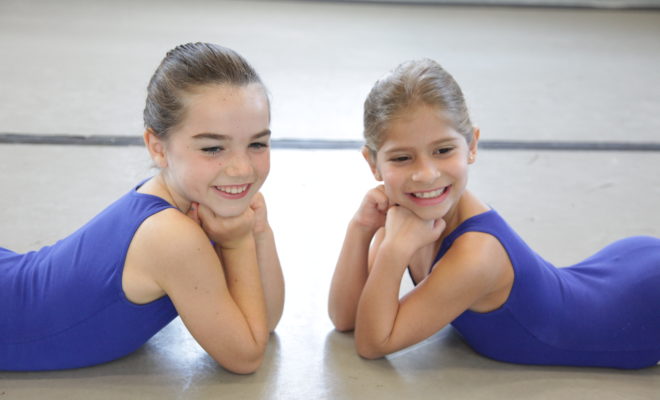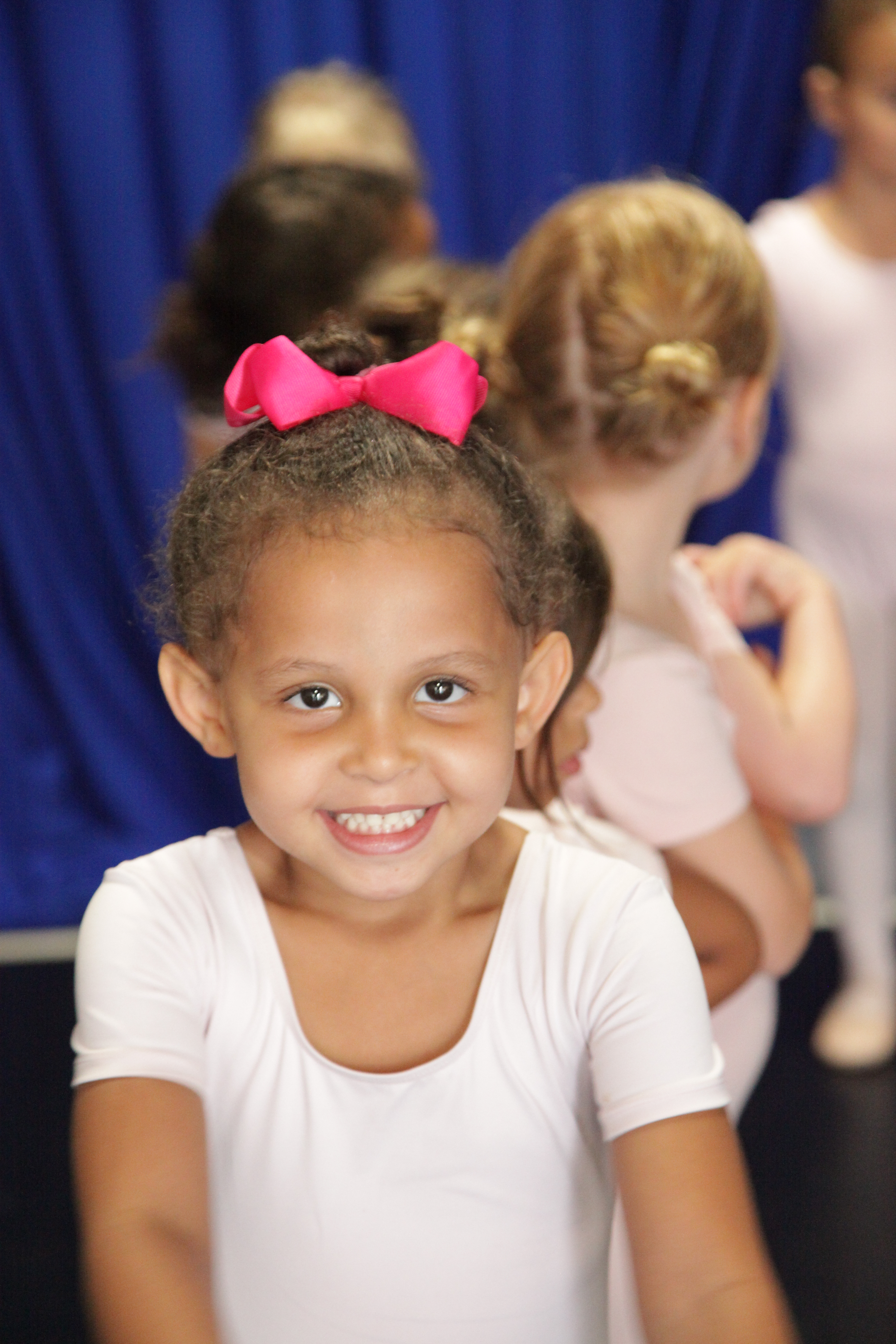
Education
The Sarasota Ballet’s Commitment to Kids
By Ryan G. Van Cleave
Here’s my disclaimer: I like the ballet. No, it’s even more than that. I’m a genuine fan of the ballet, especially when it’s paired with live music as it was this past weekend for the Dreams of Nature event at the Van Wezel, which opened The Sarasota Ballet’s 2018 spring season in a magnificent manner. While my two daughters couldn’t decide whether they liked Sir Frederick Ashton’s The Dream or David Bintley’s ‘Still Life’ at the Penguin Café most, I know what I liked—that there were so many young people in the audience. That’s part of what makes the arts in our area so special—they all get it. Young people aren’t only the performers who’ll be on stage in the future, but they’re the next generation of audiences, too. To that end, The Sarasota Ballet’s Education department has a commitment to young people that is admirable, and it starts with opportunities for kids to try it all out over the summer.
 “Our summer camps are for everybody,” says Christopher Hird, Director of Education and Principal of The Margaret Barbieri Conservatory. “No prior dance experience is required. It’s perfect for anyone wanting to learn about dance.” The Step Into Ballet Camp is for ages 4-7, and this June, children will get to experience ballet, creative movement and they’ll even have the chance to design their own costume. What kid wouldn’t get excited about that? Older kids—age 7-11—can participate in the Children’s Summer Dance Camp. The full-day program will include classes in ballet, character, jazz, mime, specialty dance, and costume design. Hird notes that those who see how fun dance can be through these camps often end up joining The Sarasota Ballet School, which runs from August to May each year.
“Our summer camps are for everybody,” says Christopher Hird, Director of Education and Principal of The Margaret Barbieri Conservatory. “No prior dance experience is required. It’s perfect for anyone wanting to learn about dance.” The Step Into Ballet Camp is for ages 4-7, and this June, children will get to experience ballet, creative movement and they’ll even have the chance to design their own costume. What kid wouldn’t get excited about that? Older kids—age 7-11—can participate in the Children’s Summer Dance Camp. The full-day program will include classes in ballet, character, jazz, mime, specialty dance, and costume design. Hird notes that those who see how fun dance can be through these camps often end up joining The Sarasota Ballet School, which runs from August to May each year.
The Sarasota Ballet’s commitment to youth is also showcased in their April 29 event at the Sarasota Opera House, where The Sarasota Ballet Studio Company and The Margaret Barbieri Conservatory will perform a mix of traditional ballet and new choreography. For the first time this year, they’ll partner with the Sarasota Youth Opera Chorus and the Sarasota Music Conservatory, bringing together talented young artists from both music and dance. And on May 5, The Sarasota Ballet School will perform Carnival of the Animals at Booker High School. This is the first time they’ve performed at Booker, notes Hird, but everyone is excited about the opportunity and the chance to use the great facilities there.
When asked what the main difference is between dance in the US and dance in Europe, Royal Ballet School-trained Hird notes that overseas, dance is funded by the government. “In the US,” he explains, “you find that arts organizations are reliant on public support. Perhaps it’s because the arts have a much longer history in Europe. It’s part of the heritage. Here, it’s more challenging [for the performers] in that many don’t have the means to become a professional dancer.”
But he quickly points out that interest in dance in general has boomed, largely thanks to TV shows such as Dancing with the Stars and So You Think You Can Dance? Hird says, “It’s enabling more of the general public to see what dance is and can be. It only benefits dance schools such as ours.”
Hird further explains that ballet training is incredibly helpful for young people, even if they don’t desire to one day dance for a  ballet company. Why? For one thing, ballet dancers are teachable. They know how to listen hard, stay focused, recognize their flaws, and adjust what they’re doing by taking instruction from someone with superior skill. They’re also great team players. While ballet might seem like a solo event, it’s not. They feed off the energy of others and are constantly working in small or large groups. And perhaps most important, an understanding of ballet prepares you to do jazz, tap, or modern dance, as well as dancing on Broadway or even for Disney. “Ballet gives you movements and terms that other dance forms use,” Hird says. “If you have ballet training, you’ll stand above others in any type of dance. You can always tell when a dancer has been trained in ballet. Many of our former students who’ve gone to other types of dance appreciate that now more than ever.”
ballet company. Why? For one thing, ballet dancers are teachable. They know how to listen hard, stay focused, recognize their flaws, and adjust what they’re doing by taking instruction from someone with superior skill. They’re also great team players. While ballet might seem like a solo event, it’s not. They feed off the energy of others and are constantly working in small or large groups. And perhaps most important, an understanding of ballet prepares you to do jazz, tap, or modern dance, as well as dancing on Broadway or even for Disney. “Ballet gives you movements and terms that other dance forms use,” Hird says. “If you have ballet training, you’ll stand above others in any type of dance. You can always tell when a dancer has been trained in ballet. Many of our former students who’ve gone to other types of dance appreciate that now more than ever.”
In fact, one of the greatest pleasures for Hird and other dance instructors is when a student who isn’t quite as invested or isn’t working as hard as others suddenly finds inspiration. “You can practically see the switch,” says Hird. “They develop drive and understand what all the hard work is about. It clarifies the goal for them in a useful way. It’s so amazing to see dancers who come through that process go on to succeed.”
What I hope my own kids take away from ballet is an appreciation for how it’s unique. Just watching a great performance shows that it’s possible to say things through dance that are difficult or even impossible to express in words. Plus, ballet has the capacity to touch people on a profound, abstract level. In a world that’s more screen-based and fast-paced by the moment, those powerful moments of beauty are valuable for anyone, from the youngest of children to the oldest of adults.
Ryan Van Cleave has written 20 books, and leads the creative writing department at Ringling College of Art. ryangvancleave.com



You must be logged in to post a comment Login